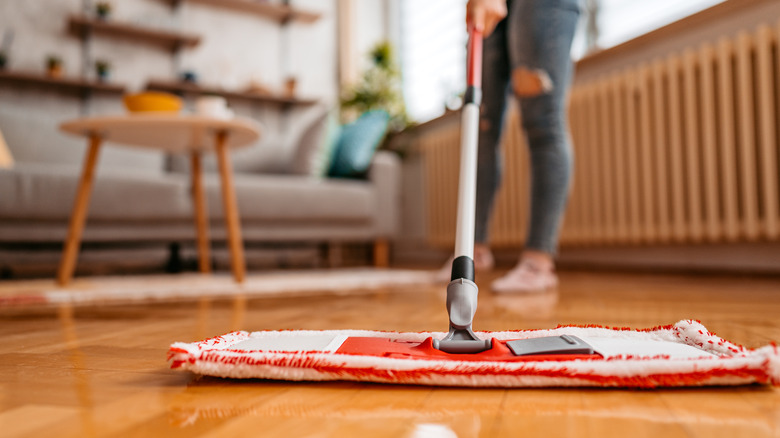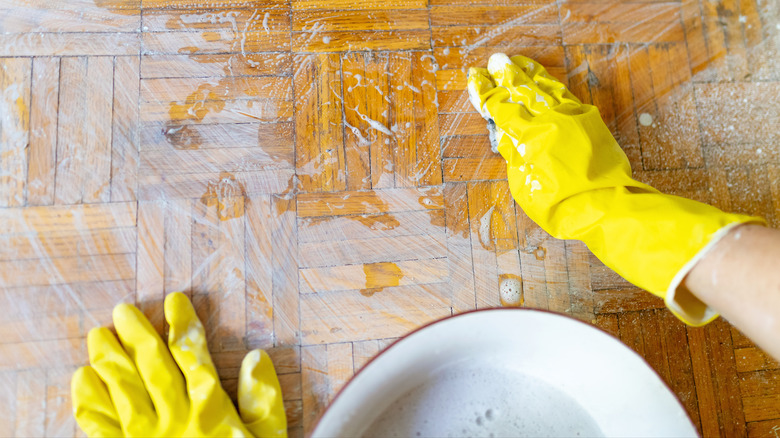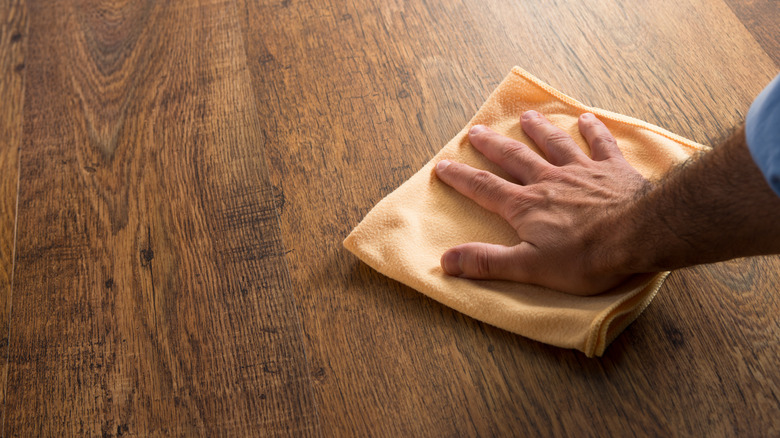The Best Method For Removing Sticky Residue From Your Wood Floors
Wooden floors are durable and strong, but still attract stains just like every other floor. One of the worst stain offenders for wooden floors is sticky residue, often seen in high-traffic areas like hallways or kitchens. You're probably more than used to seeing this annoying type of mark if you have pets or children, but did you know that there's a very easy way to get rid of these unsightly patches? This trick to getting your wooden floor nice and clean again is gentle on the floor but harsh on stains.
Residue can be caused by food that has fallen, spilled drinks, dust, dirt, or even using too much detergent when mopping. While it's frustrating to see residue on your wooden floors, you shouldn't dive in with any old cleaning products, or you could end up with scratches you can't get rid of. This especially applies to cleaning hardwood floors. By following the below wood-safe cleaning method, you'll be left with squeaky clean wooden flooring that has no trace of residue or any scratches.
Simple and easy, this hack will banish residue
For this hack, you'll need glass cleaner (ammonia free), a non-scratch scrubber, and a few microfiber cloths. To start, spritz a few sprays of your chosen glass cleaner over the area of floor with visible residue. Wait approximately a minute for the cleaner to do its work before going in with the scrubber. Remember that this scrubber should be gentle, as abrasion will scratch wooden floors. Scrub the area you sprayed the glass cleaner on carefully, making sure to really work it in.
As soon as you are done scrubbing, grab a microfiber cloth and wipe away any excess glass cleaner. The section of floor should look clean and be free of residue and cleaner. If you have multiple areas of sticky residue or are cleaning the whole floor, make sure your scrubber and cloths remain clean throughout the process. Otherwise, you'll be undoing your hard work with dirty tools. A useful tip while cleaning is to spray the next area of your floor with the glass cleaner as you're working on another patch so you're not stuck waiting around for a while.
Some cleaning methods harm wooden floors, but this one is safe
This hack works because, unlike regular detergent, the ingredients in glass cleaner work to remove sticky residue. However, it's key that you pick a glass cleaner without ammonia. Ammonia damages wooden floors by dissolving the lignin wood contains. It could also leave it with a dull finish. Another thing to keep in mind is that this cleaning trick requires waiting a little for a successful outcome. By not waiting, the glass cleaner won't have time to sink in and won't work to remove residue nearly as well.
If you don't have a specific scrubber or feel the one you have is too abrasive, substitute for a kitchen sponge. While they feature a scrub function, kitchen sponges aren't usually as abrasive and so won't cause damage like a scrubber specifically designed to remove stubborn stains might. Still have some visible residue left? You may need to repeat the method, or let the glass cleaner sit for a little longer before going in with the scrubber and cloth. Never scrub too hard though — again, this may leave more marks than you started with.


